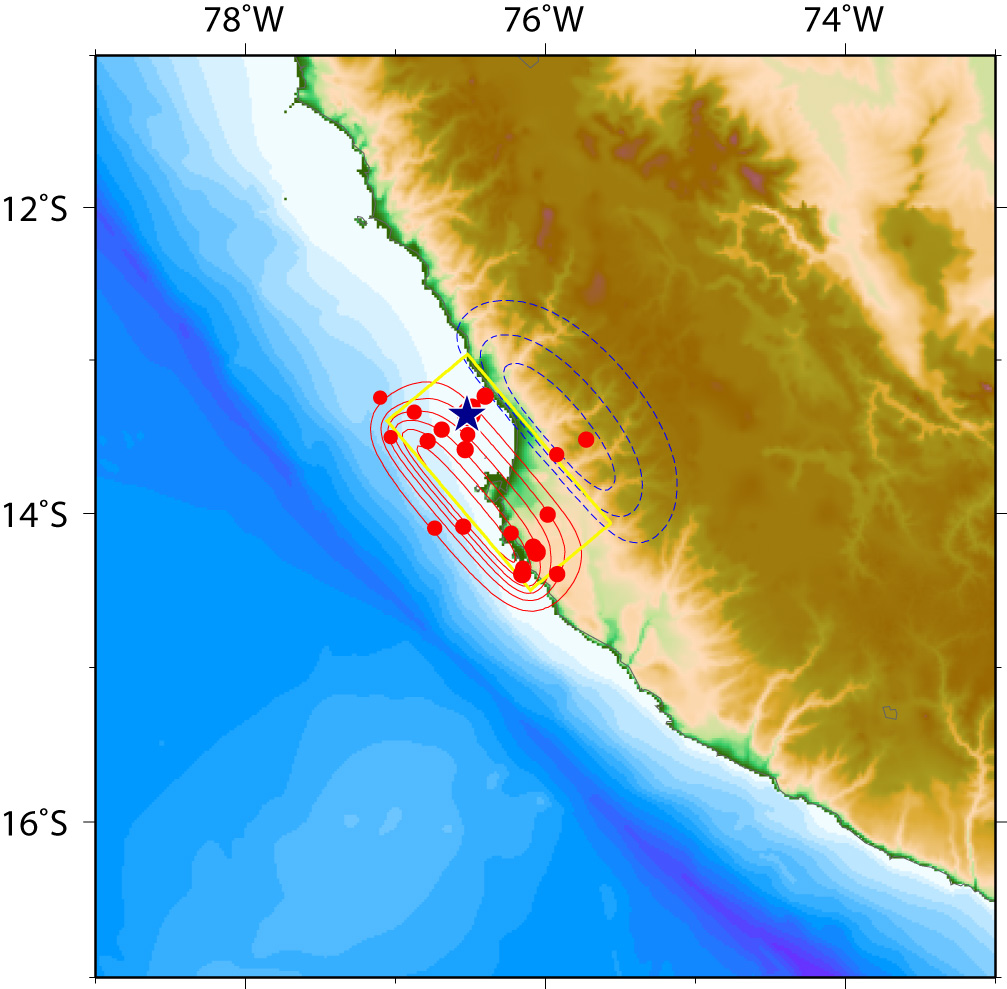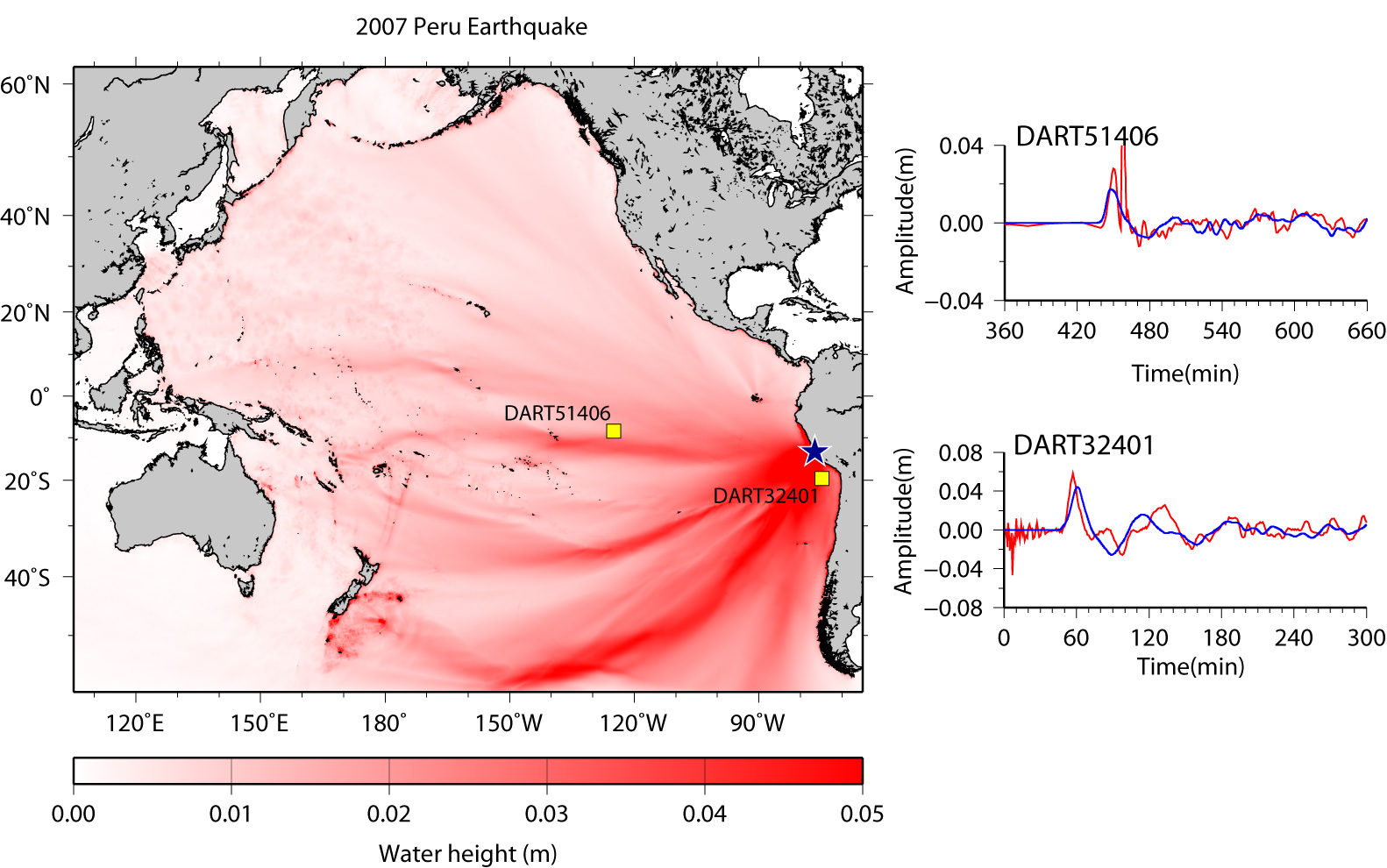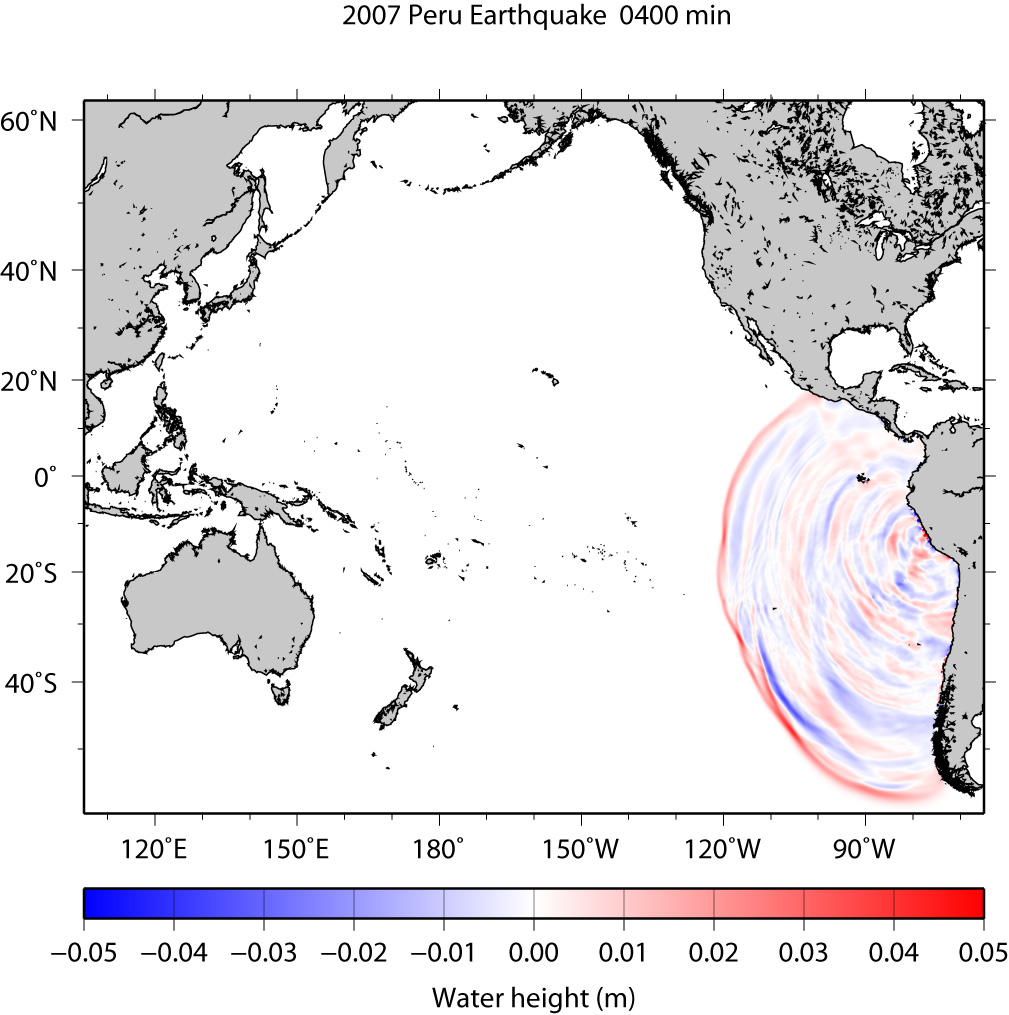| Peru Tsunami on August 15, 2007 |
We have simulated the tsunami generated from the Off Peru earthquake (13.353°S, 76.510°W, Mw = 8.0 at 23:40:57 UTC according to
USGS) on August 15, 2007. The computed tsunami travel times assuming the source area from the aftershocks distribution are shown in Fig. 1.
The assumed tsunami source model covers the aftershocks distribution during one day after the mainshock (Fig. 2). The fault size is 160 km × 80 km. Top depth of the fault is 16.5 km. Average slip on fault is 3 m. The seismic moment is 1.9 x 10**21 Nm (Mw = 8.1) assuming the regidity of 5 x 10**10 N/m**2.
The assumed focal mechanism is strike = 320º, dip angle = 20º and slip angle = 90º.
As the initial condition for tsunami, static deformation of the seafloor is calculated for a rectangular fault model [Okada, 1985] using the source model.
The computation area extends from 105°E to 65°W and 58°S to 62°N (Fig. 3). The used bathymetry data has 2' grid interval resampled from
General Bathymetric Chart of the Oceans (GEBCO) 1' grid data, hence there are 5,700 × 3,600 grid points along the longitude and latitude directions, respectively.
To calculate tsunami propagation, the linear shallow-water, or long-wave, equations were numerically solved by using finite-difference method [Satake, 1995].

Fig.1 Tsunami Travel Times
Thick contours indicate tsunami travel times in hour.

Fig.2 Tsunami Source Model
The red contours indicate uplift with the contour interval of 0.2 m, while the blue contours indicate subsidence with the contour interval of 0.1 m.
Aftershocks (determined by USGS) during one day after the mainshock are also shown by red circles.

Fig.3 Maximum Height of Computed Tsunami and Simulated Tsunami Waveforms
Solid lines in red and blue indicate observed tsunami waveforms and synthtic ones, respectively. We have downloaded the DART data from
NOAA's web site.

Fig.4 Tsunami Propagation
(Click to start GIF animation)
(Click to start GIF animation 2)
The red color means that the water surface is higher than normal sea level, while the blue means lower.
| by Yushiro Fujii (IISEE, BRI) and Kenji Satake (GSJ, AIST) |
|
|
| References |
|
Okada, Y. (1985), Surface Deformation Due to Shear and Tensile Faults in a Half-Space, Bull. Seismol. Soc. Am., 75, 1135-1154. Satake, K. (1995), Linear and Nonlinear Computations of the 1992 Nicaragua Earthquake Tsunami, Pure and Appl. Geophys., 144, 455-470. |
Last Updated on 2007/8/17